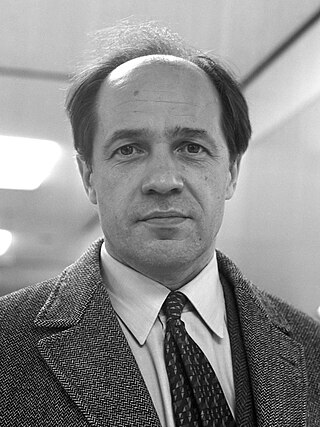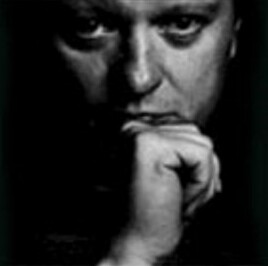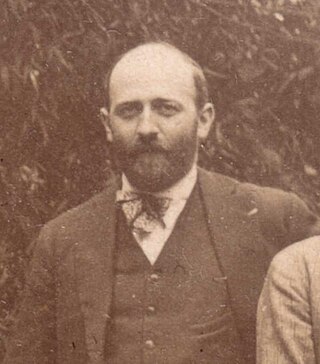Related Research Articles

Pierre Louis Joseph Boulez was a French composer, conductor and writer, and the founder of several musical institutions. He was one of the dominant figures of post-war contemporary classical music.

A string orchestra is an orchestra consisting solely of a string section made up of the bowed strings used in Western Classical music. The instruments of such an orchestra are most often the following: the violin, which is divided into first and second violin players, the viola, the cello, and usually, but not always, the double bass.

Pli selon pli is a piece of classical music by the French composer Pierre Boulez. It carries the subtitle Portrait de Mallarmé. It is scored for a solo soprano and orchestra and uses the texts of three sonnets of French symbolist poet Stéphane Mallarmé and single lines from two of his other poems. At over an hour, it is Boulez's longest work.

Philippe Manoury is a French composer.
Polyphonie X (1950–51) is a three-movement composition by Pierre Boulez for eighteen instruments divided into seven groups, with a duration of roughly fifteen minutes. Following the work's premiere, Boulez withdrew the score, stating that it suffered from "theoretical exaggeration". Despite Boulez's dissatisfaction with the piece, it played a key role in his development: one writer called it "the linchpin connecting Boulez's early mastery of gesture and contour... with his later interest in large ensembles and grand forms", his "brave 'first attempt' to produce a work that exhausted a particular musical technique with large orchestral forces by developing an expansive, additive structure at the earliest stages of composition", and "one of the purest representations of Boulez's first turn toward integral serialism".
Pierre Boulez composed three piano sonatas: the First Piano Sonata in 1946, the Second Piano Sonata in 1947–48, and the Third Piano Sonata in 1955–57 with further elaborations up to at least 1963, though only two of its movements have been published.
Structures I (1952) and Structures II (1961) are two related works for two pianos, composed by the French composer Pierre Boulez.

Rituel in memoriam Bruno Maderna (1974–75) is a composition for orchestra in eight groups by Pierre Boulez. Biographer Dominique Jameux wrote that the piece has "obvious audience appeal", and that it represented a desire to establish "immediate, almost physical contact with the public". Jameux also noted that Rituel represents one of the few examples of repetitive music written by Boulez. Author Jonathan Goldman wrote that, of Boulez's works, Rituel is the one that "most evokes... the sound worlds of non-Western musical ensembles, be they Indonesian, African or South American."

Alexis Fernand Félix Jean Rivier was a French composer of classical music in the neoclassical style.

The Ojai Music Festival is an annual classical music festival in the United States. Held in Ojai, California, for four days every June, the festival presents music, symposia, and educational programs emphasizing adventurous, eclectic, and challenging music, principally by contemporary composers. A secondary focus of the Festival is the discovery or rediscovery of rare or little known works by past masters.
Alexandre Rabinovitch-Barakovsky is a Russian-born composer, conductor and classical pianist who lives in Switzerland. He is one of the first composers of minimalism ; "La Belle Musique N.3" (1977) is the first work for orchestra in the minimalist field. He emigrated to Paris from Moscow in 1974, and now lives in Switzerland. He has collaborated with numerous musical artists, notably with the pianist Martha Argerich, with whom he has recorded works by Rachmaninoff and Brahms.
Henry Barraud was a French composer.

Three Pieces for String Quartet is a composition by Russian composer Igor Stravinsky. It was finished in 1914, revised in 1918, and eventually published in 1922.

Le Soleil des eaux is a two-movement cantata for soprano, choir and orchestra by Pierre Boulez, based on two poems by René Char, and having a total duration of about nine minutes.

Guillaume Latour is a French violinist. He plays on a violin by Jean-Baptiste Vuillaume dated 1830.
The Parrenin Quartet is a French chamber music ensemble for two violons, viola and cello.
Domaines is a composition by Pierre Boulez. Written during 1961–1968, it exists in two versions, one for clarinet solo, the other for clarinet solo and six instrumental groups. Like a number of other Boulez works of this period, it uses mobile form.
Livre pour quatuor is a composition for string quartet by Pierre Boulez.
Éclat is a composition for fifteen instruments by Pierre Boulez.
References
- 1 2 3 4 Jameux 1991, p. 149.
- 1 2 Boulez 1976, p. 49.
- 1 2 3 "Pierre Boulez (1925-2016): Livre pour cordes (1968)". IRCAM. Retrieved 28 April 2024.
- ↑ Griffiths 1978, p. 21.
- ↑ O'Hagan 1986, p. 317.
- ↑ "Pierre Boulez: Livre pour Cordes". Wise Music Classical. Retrieved 28 April 2024.
- ↑ Smith 2010.
- ↑ Swed 2010.
- ↑ Garlick 2018.
- ↑ Harley n.d.
Sources
- Boulez, Pierre (1976). Conversations with Célestin Deliège. Ernst Eulenburg.
- Garlick, Chris (26 March 2018). "Alert and refined: LSO on top form under François-Xavier Roth". Bachtrack. Retrieved 28 April 2024.
- Griffiths, Paul (1978). Boulez. Oxford University Press.
- Harley, James (n.d.). "Pierre Boulez: Livre pour cordes, for strings". AllMusic. Retrieved 28 April 2024.
- Jameux, Dominique (1991). Pierre Boulez. Harvard University Press.
- O'Hagan, Peter (1986). "Pierre Boulez in London: the William Glock Years". In Glock, William (ed.). Pierre Boulez: A Symposium. New London: Eulenberg Books.
- Smith, Steve (1 February 2010). "Whole Orchestra Shines, Nurtured by a Deft Touch". The New York Times. Retrieved 28 April 2024.
- Swed, Mark (1 February 2010). "Music review: Pierre Boulez and a certain Chicago flutist in New York". Los Angeles Times. Retrieved 28 April 2024.